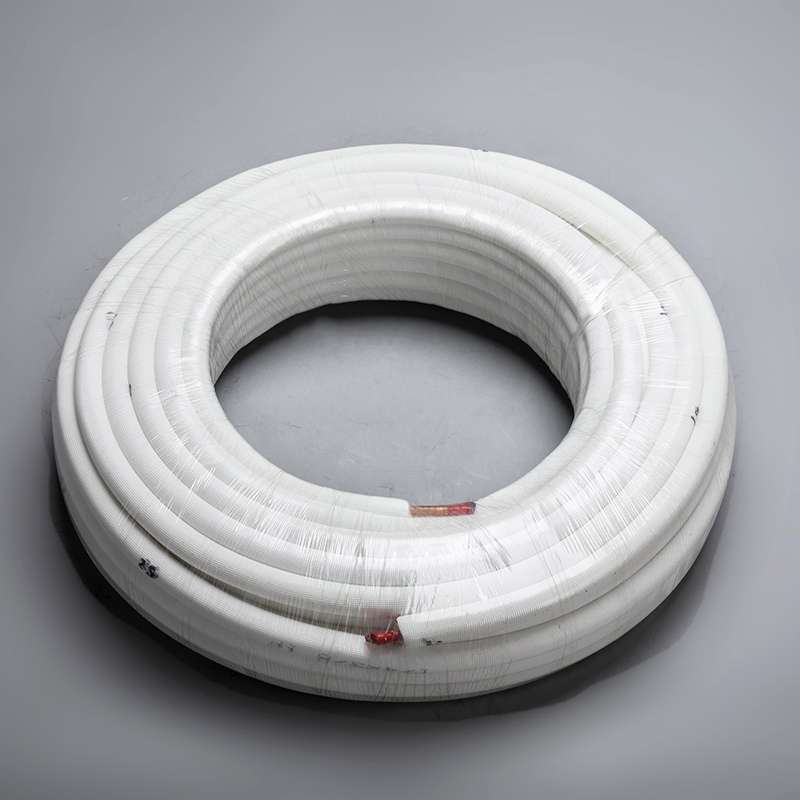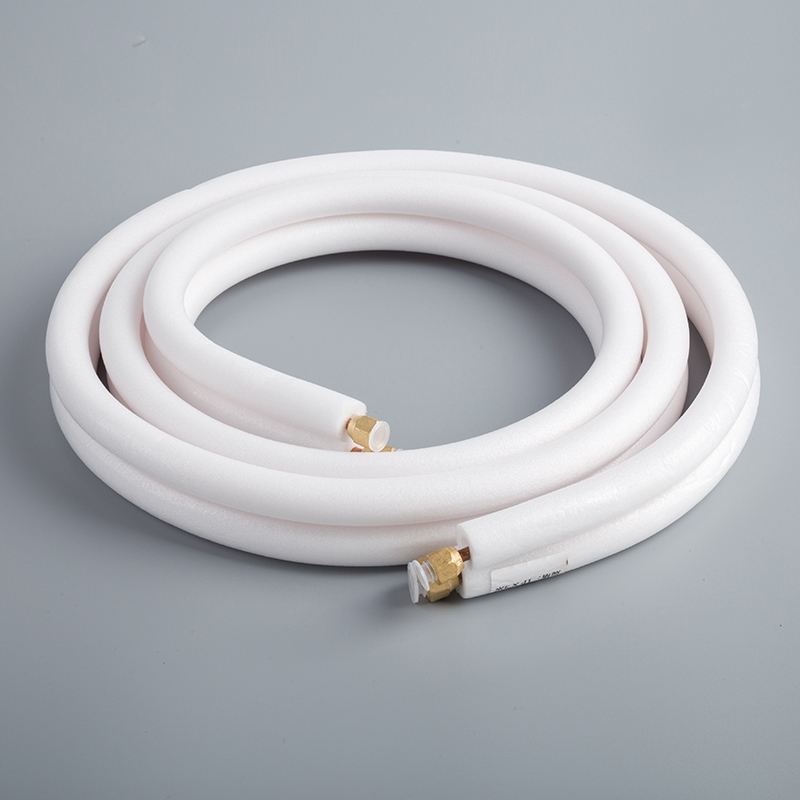1 1/2 Inch vs 1/2 Inch Copper Pipe: Which is Right for You?
When deciding between 1 1/2 inch copper pipe and 1/2 inch copper pipe, it is crucial to understand the implications of choosing the right pipe size. The choice can significantly impact the efficiency and effectiveness of plumbing systems. In this discussion, we will delve into the key differences between these two options, shedding light on their applications, specifications, and suitability for various projects. Additionally, we will touch upon the 1 1/4 in copper pipe and the 1 2 copper pipe od to provide a comprehensive overview of available options.
Usage

Domestic Water Systems
When considering 1 1/2 inch copper pipe for domestic water systems, it is essential to recognize its primary applications. This size of copper pipe is commonly utilized in residential settings for main water lines and service distribution. Its larger diameter allows for a higher volume of water flow, making it suitable for properties with greater water demands. On the other hand, 1/2 inch copper pipe is more commonly found in smaller-scale applications within homes. It is often used for individual fixtures like faucets and appliances that do not require as much water flow.
HVAC Systems
In HVAC systems, the choice between 1 1/2 inch copper pipe and 1/2 inch copper pipe can significantly impact the efficiency of heating and cooling processes. The larger diameter of the 1 1/2 inch copper pipe allows for better circulation of air or coolant, making it ideal for larger commercial or industrial HVAC systems. Conversely, the 1/2 inch copper pipe is sufficient for smaller residential HVAC units where space may be limited, and lower volumes of air or coolant are required.
Fire Protection
When it comes to fire protection systems, the selection between 1 1/2 inch copper pipe and 1/2 inch copper pipe plays a crucial role in ensuring adequate water supply during emergencies. The 1 1/2 inch copper pipe, with its larger dimensions, is commonly used in commercial and industrial buildings where high volumes of water are necessary to suppress fires effectively. In contrast, the 1/2 inch copper pipe may be suitable for smaller residential fire protection systems or standalone sprinkler installations.
Specifications
In the realm of copper pipes, understanding the Dimensions is paramount to selecting the appropriate pipe for your project. The 1 1/2 inch copper pipe boasts a substantial outside diameter of 1 5/8 inches, providing ample space for efficient water flow in various applications. On the other hand, the 1/2 inch copper pipe, often mistakenly referred to as half an inch, actually has an outside diameter of 5/8 inch. Despite its smaller size, this pipe is a versatile option commonly utilized in plumbing projects within residential and light domestic settings.
When it comes to Wall Thickness, different types of copper pipes offer varying levels of durability and reliability. Type L Copper, with a wall thickness of 0.040 inches for the 1/2 inch size, ensures robustness in water distribution systems where strength is crucial. Conversely, Type M Copper presents a thinner wall thickness of 0.028 inches for the same size, offering flexibility and ease of installation without compromising on quality.
The Material Composition of these copper pipes plays a significant role in their performance and longevity. Both the 1 1/2 inch and 1/2 inch copper pipes are constructed from Alloy, which enhances their resistance to corrosion and extends their lifespan. This composition ensures that these pipes can withstand varying environmental conditions while maintaining optimal functionality.
Applications

Residential
1 1/2 inch copper pipe
Residential Usage: The 1 1/2 inch copper pipe is commonly employed in residential properties for various applications.
Water Distribution: It facilitates efficient water distribution throughout the house, ensuring adequate supply to different fixtures.
Main Water Lines: This pipe size is ideal for main water lines, providing a steady flow of water for everyday use.
Service Distribution: It plays a crucial role in service distribution within residential plumbing systems.
1/2 inch copper pipe
Residential Plumbing: The 1/2 inch copper pipe is prevalent in residential plumbing due to its versatility and compatibility with smaller-scale applications.
Fixture Connections: It is often used to connect individual fixtures like sinks, toilets, and showers.
Water Lines: This size of copper pipe is suitable for water lines within homes, ensuring consistent water supply.
Light Domestic Use: It caters to light domestic water requirements effectively.
Commercial
1 1/2 inch copper pipe
Commercial Establishments: In commercial settings, the 1 1/2 inch copper pipe serves diverse purposes owing to its larger diameter.
High Water Demand: It meets the high water demand of commercial buildings such as offices, restaurants, and shopping centers.
Robust Water Flow: This pipe size ensures robust water flow for various commercial activities and facilities.
Multi-Fixture Connectivity: It allows multiple fixtures to be connected without compromising on water pressure.
1/2 inch copper pipe
Commercial Applications: The versatility of the 1/2 inch copper pipe extends to commercial applications where smaller diameters are required.
Specific Fixtures: It caters to specific fixtures within commercial spaces that do not necessitate high-volume water flow.
Limited Space Solutions: This size of copper pipe fits well in areas with space constraints while maintaining functionality.
Moderate Water Needs: It addresses moderate water needs in commercial setups efficiently.
Industrial
1 1/2 inch copper pipe
Industrial Utility: The application of the robust and reliable 1 1/2 inch copper pipe extends into industrial environments.
Heavy-Duty Systems: It supports heavy-duty industrial systems requiring substantial water circulation capacity.
Industrial Processes: This size of copper pipe contributes significantly to industrial processes demanding high-volume fluid transfer.
Durability & Performance: Its durability and performance make it a preferred choice for industrial fluid handling solutions.
1/2 inch copper pipe
Industrial Integration: Despite its smaller size, the versatile nature of the 1/2 inch copper pipe finds relevance in industrial settings.
Compact Installations: It facilitates compact installations where space optimization is crucial without compromising on functionality.
Precision Applications: This size of copper pipes caters to precision applications within industrial operations requiring controlled fluid conveyance.
Efficient Fluid Transfer: It ensures efficient fluid transfer in various industrial processes while maintaining structural integrity.
To ensure safety and cost-effectiveness, opting for a larger pipe size is recommended. It's practical to consider the lowest-cost pipe that will work effectively for your project, avoiding unnecessary expenses on oversized pipes.
Understanding the appropriate size of copper pipes for water lines is crucial in plumbing systems where water pressure is essential for operation.
Selecting the right fittings based on the piping size system used, whether it's Iron Pipe Size (IPS), Copper Piping, Copper Tube Sizes (CTS), CPVC, or PEX, is vital to ensure compatibility and functionality.
The concept of nominal pipe size, which measures the inner diameter rather than the actual diameter, plays a significant role in determining the required flow rate through tubes or pipes in building plumbing plans.
See Also
Top 5 Tips for Handling Unusual 1/2' Copper Tubing
The Ultimate Handbook for Choosing 1/4 3/8 Copper Tubing Rolls
Key Advice for Utilizing 1/4 Copper Tubing Connectors
Expert Soldering Techniques for 1 1/2 Copper Tubing
The Definitive Manual for Purchasing 1/4 3/8 Copper Tubing Rolls


